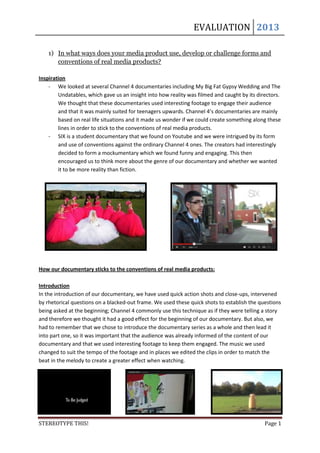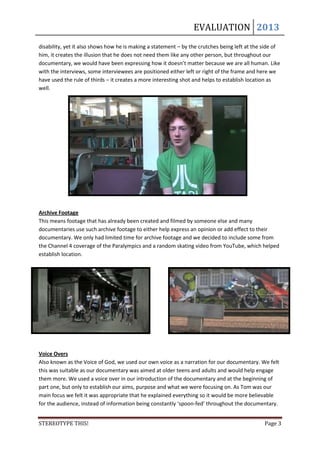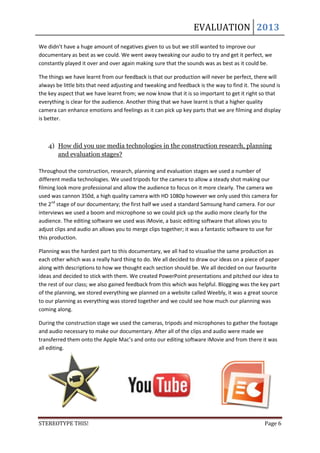Our documentary aimed to challenge stereotypes by telling the story of Tom, a disabled man. We strived to follow conventions of real media by using techniques like quick shots and music in the introduction. Interviews were framed to focus on facial expressions. We received positive feedback but learned our audio needed improving. Throughout production we used technologies like cameras, microphones, and iMovie to help plan, film, and edit our documentary. Our skills have advanced from learning new editing and filming techniques to create a higher quality product.







